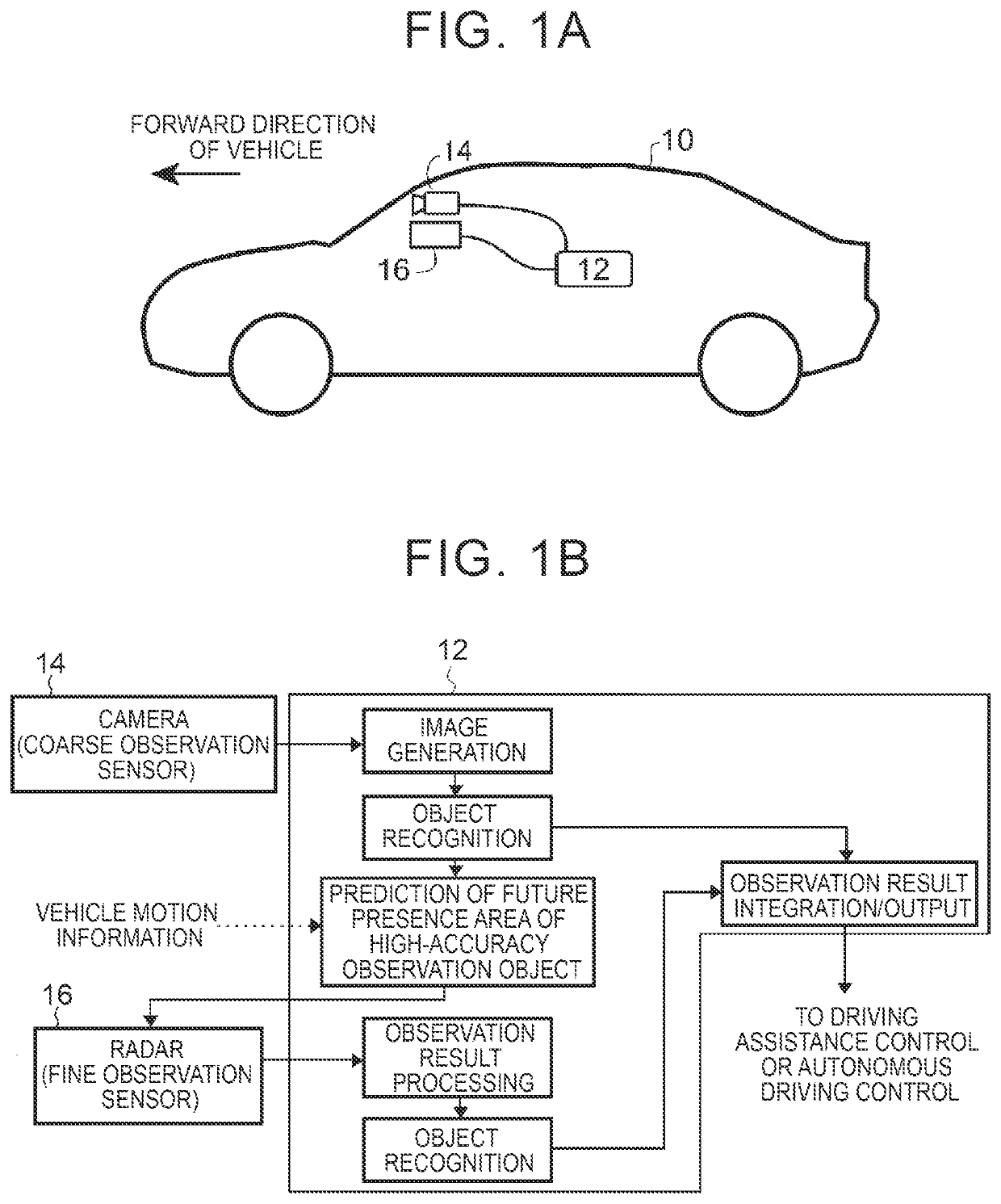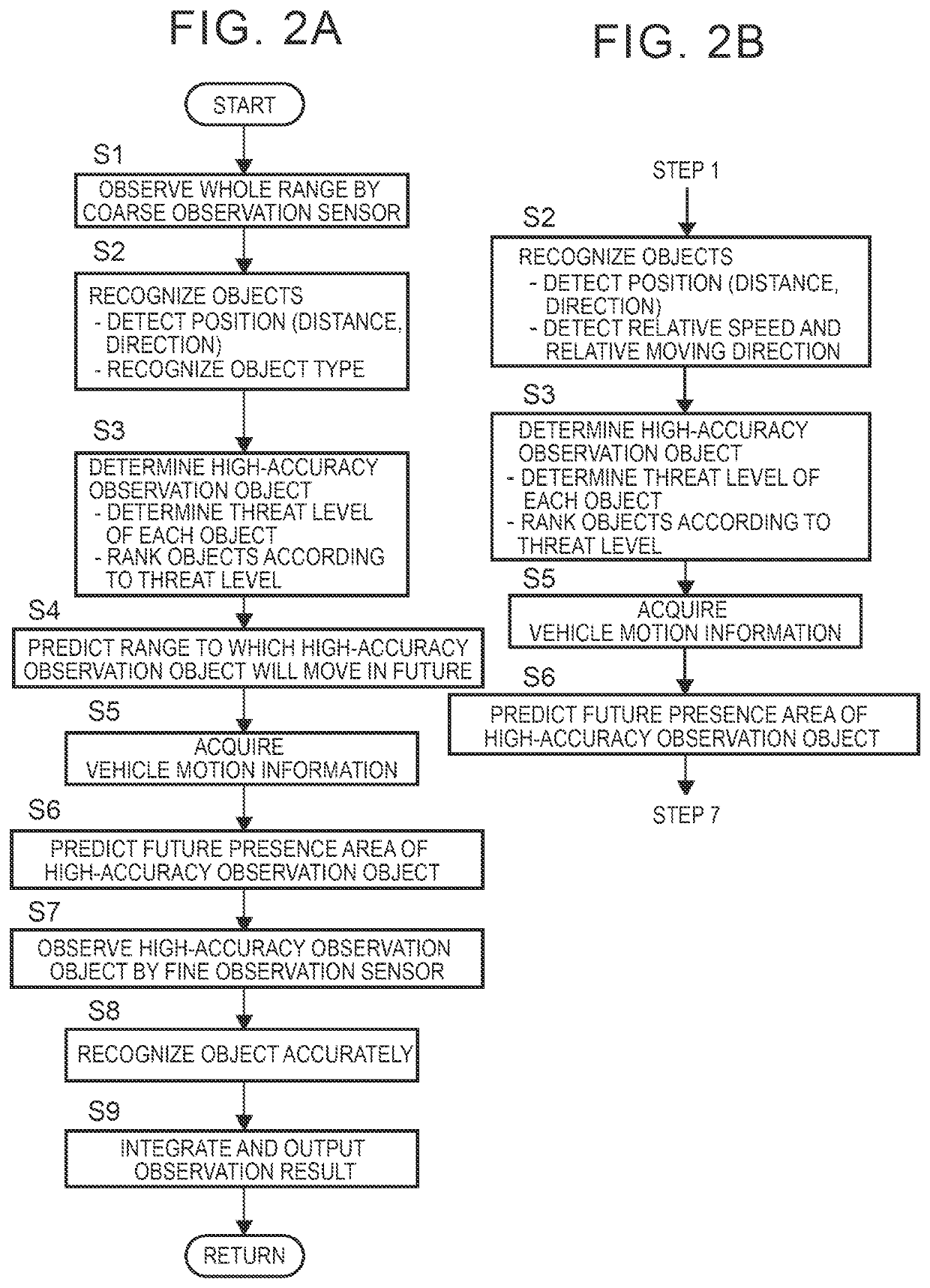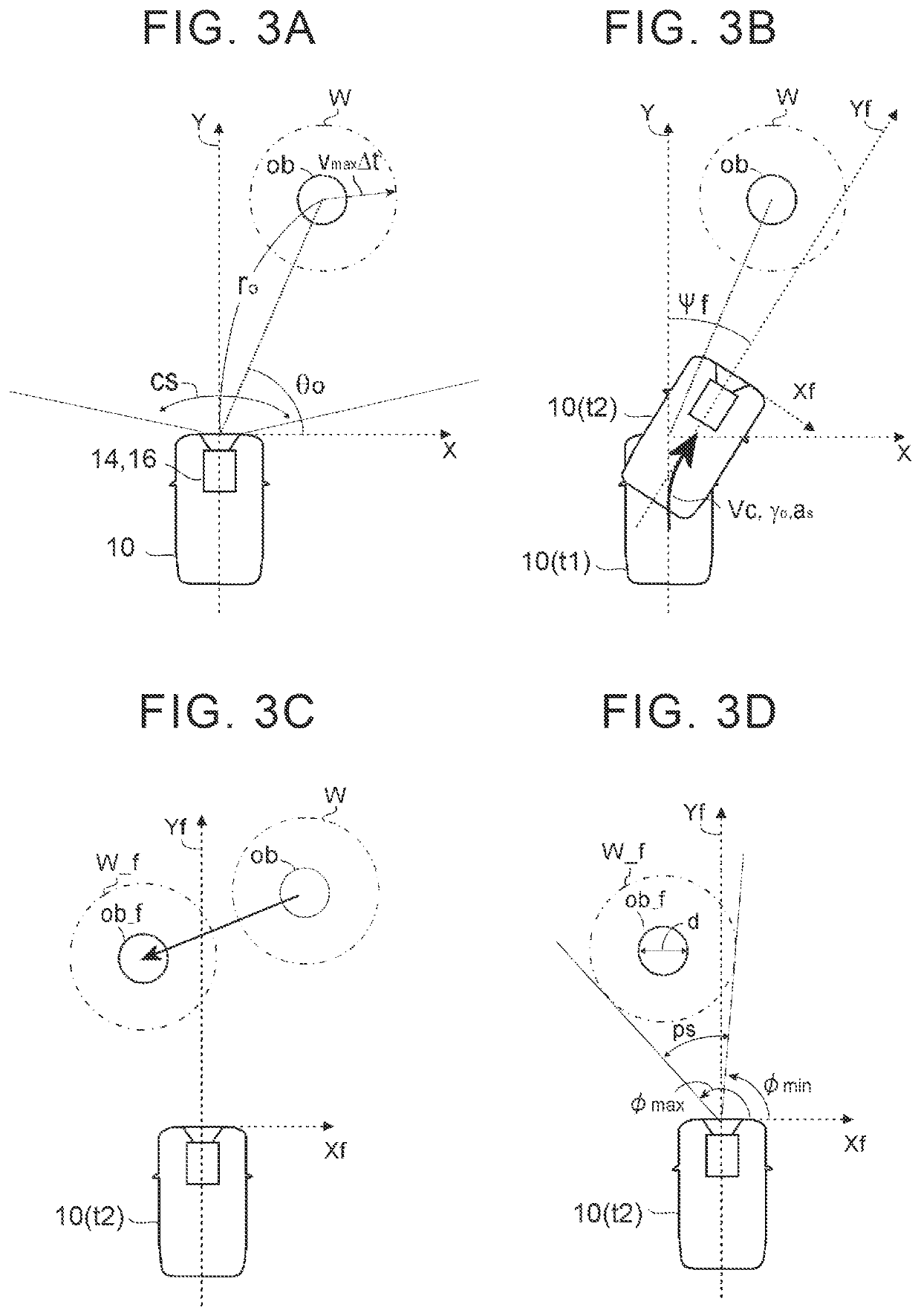In-vehicle sensor system
a sensor system and vehicle technology, applied in the field of vehicle sensors, can solve the problems of high-accuracy observation objects, difficult to accurately observe the whole area of the range to be observed, and long time-consuming to try to observe the situation around a vehicle widely and accurately, so as to quickly and efficiently recognize the situation around the vehicle, the effect of quick and reliable performan
- Summary
- Abstract
- Description
- Claims
- Application Information
AI Technical Summary
Benefits of technology
Problems solved by technology
Method used
Image
Examples
Embodiment Construction
Configuration of In-Vehicle Sensor System
[0026]With reference to FIG. 1A, an embodiment of an in-vehicle sensor system of the present disclosure will be described. A vehicle 10 such as an automobile includes a coarse observation sensor 14, a fine observation sensor 16, and an observation control device 12. The coarse observation sensor 14 observes the situation around the vehicle 10 at a first resolution. The fine observation sensor 16 observes the situation around the vehicle 10 at a second resolution that is higher than the first resolution. The observation control device 12 controls the operation of the coarse observation sensor 14 and the fine observation sensor 16. In addition, the observation control device 12 receives signals from the coarse observation sensor 14 and the fine observation sensor 16 and, from the received signals, detects and recognizes the presence or absence of objects (such as other vehicles, roadside buildings, walls, fences, guardrails, poles, parked vehic...
PUM
 Login to View More
Login to View More Abstract
Description
Claims
Application Information
 Login to View More
Login to View More - R&D
- Intellectual Property
- Life Sciences
- Materials
- Tech Scout
- Unparalleled Data Quality
- Higher Quality Content
- 60% Fewer Hallucinations
Browse by: Latest US Patents, China's latest patents, Technical Efficacy Thesaurus, Application Domain, Technology Topic, Popular Technical Reports.
© 2025 PatSnap. All rights reserved.Legal|Privacy policy|Modern Slavery Act Transparency Statement|Sitemap|About US| Contact US: help@patsnap.com



